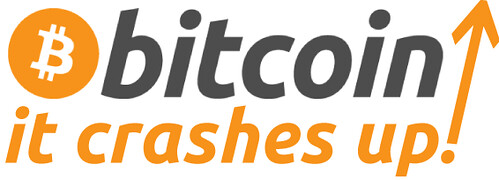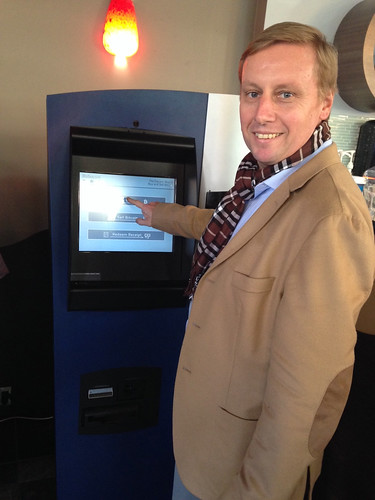Update: the predicted crash happened about 12 hours after I wrote this post, see details at end of post.
Since I started following Bitcoin the price has been very volatile but mainly been rising. If you had bought Bitcoin around the time I started blogging about it you would have made a very decent return (360% in less than 5 months), however most of these gains were realized over the past couple of weeks and especially the past couple of days.
One month ago Bitcoin was still at $135, a week ago the rate was around $220, but right now it hovers around $370. It’s great when you plan to make a quick buck, but I see Bitcoin as a long-term investment (or speculation as some call it) in a crypto currency that has the potential to change the world of finance. In that case such a fast increase is not desirable, because it looks like a hype. And I believe what we are seeing right now is a hype, many people seem to be buying in the hope of higher prices.
I believe that in about 2 years from now Bitcoin will be at $1000, based on fixed supply and increased demand because of more transactions taking place in Bitcoin. But I hope we won’t hit that in a few months already. At the current rate of increase (sometimes over 20% per day) I feel like a crash is imminent.
Most current demand seems to be from China, which explains why Bitcoin goes up most during daytime in East Asia. A lot of people don’t fully understand the long term potential of Bitcoin and will likely try to sell to get out of it, making the crash even worse. I won’t sell and will try to buy at the low end of the crash, which should be higher than the last flash crash that ended at lows of $185. But I still hope that it won’t happen because it will undermine the confidence people have in the currency.
So on the one hand I am extremely bullish on Bitcoin, but in the short run I feel the high price may not be sustainable yet. Maybe (hopefully) I am wrong, and the current demand is really based on more people buying with the intention of holding the currency for a long time or to use it for transactions. But if not I would not be surprised to see a flash crash happening soon.
I am normally very bullish, but the current pattern is scary and it reminds me patterns that I learned while studying economics of what happened during the Tulip Bulb rally in 1637 or right before the Dow Jones crash in September 1929. Bitcoin is fundamentally different from what happened there, but it seems that ‘dumb money’ is now entering the market, just like it happened during those times. Time will tell, and if it happens I will of course blog about it.
—
Update: a crash indeed happened about 12 hours after I wrote my post. At first the drop was quite scary:
But I hoped the market would find a bottom and it did indeed. Two days later the market is almost back where it came from:
The growth is still too fast, but at least some of the speculators have probably left the market.

















